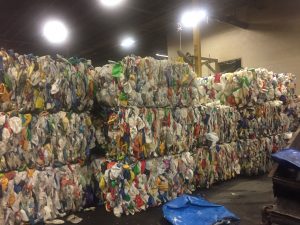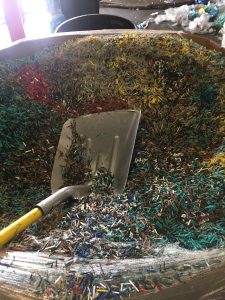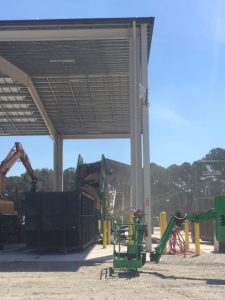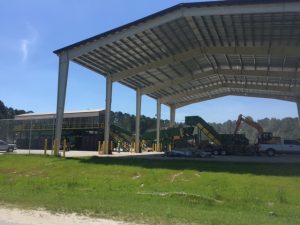My first week with NC Division of Environmental Assistance and Customer Service (DEACS) has been adventurous in many ways! On my first day I immediately walked into a morning meeting regarding the politics surrounding this place as a government institution- proposed budget cuts by the NCGA. The Division, which is housed in the NC Department of Environmental Quality (NCDEQ), has been proposed for elimination by the NC Senate Budget. The House will now form their budget and the two will meet to work on a finalized version. Since the news of the Senate budget came through the pipeline, DEACS has been working hard to gather information from businesses and constituents about why their services matter in the community. In addition, DEACS staff have been working to produce material outlining how their grants have served different counties and how the management of those grants by DEACS staff has helped them and their businesses thrive. These grants can be used by recyclers to get new equipment they need, to build storage and protection facilities for materials, and much more.
Politics aside- I’ve learned a lot about recycling in just one week. It’s important to focus on the process. Where do these materials go once consumers and businesses have done their part by putting them into the recycling bin? During the last week I got to find out.
On my second day on the job I had the opportunity to visit a Construction and Demolition facility in Pitt County. This is where left over construction material from industry and businesses goes to be sorted and recycled.
You can see in the first picture that a tractor is lifting materials into a container that then goes onto an ‘escalator’ where the materials go under a magnet that pulls out any nails, screws, or other small metals that may be mingled in with the recyclable debris. The materials then go up to a pick line where ~7-10 individuals physically pick through the materials, sorting them into different bins if they can be recycled. If the materials cannot be recycled they go to the end of the line where they are put into a dumpster. The facility recycles things like roofing shingles, wood, and cardboard to name a few. In the next picture you can see the pick line platform on the left of the covered overhang. This is a type of MRF- or materials recovery facility. We have these for general recyclables too. The community standard now is co-mingled or single stream recycling- this means that we put all of our recycling into one container- metal, glass, and paper are not separated individually as it used to be. The MRF facilities sort these materials into their respective categories. These items are typically baled together as pictured below, and then shredded.
A lot of what I’ve learned so far has to do with this process. MRFs collect recycling from communities and separate it by individual types of recyclables. Certain types of plastics go in one place- some resins don’t mix together in useful ways (milk jugs and soda bottles are made of different plastics that cannot be sorted together if the materials are to be of any use in the future), metals and paper (fibers) are sorted as well. Once these materials are gathered and put together in their categories they are taken by different types of recyclers who usually shred the material or melt it so that it can be used to develop different items.
An example given to me during one of the tours of a plastics recycler was plastic floor boards. Manufacturers of the boards buy the plastic material from the recycler and put it into their product. This can save businesses money in development and harvesting costs of materials while still being environmentally friendly.
 There is too much to write about what I have done so far. In all, I traveled out of the office to tour different recyclers on three of my five days last week. I saw the coordination behind what it takes to institute and manage multi-family recycling and university recycling. I toured plastics recyclers, rubber recycling, a C & D facility, a granite countertops recycler (turned into paving stones and fire places), and more. I have a lot to learn about how these materials make their way from the consumer to their final destination(s). I’m glad to be more informed, and hope I can keep you that way too this summer! Thanks for reading.
There is too much to write about what I have done so far. In all, I traveled out of the office to tour different recyclers on three of my five days last week. I saw the coordination behind what it takes to institute and manage multi-family recycling and university recycling. I toured plastics recyclers, rubber recycling, a C & D facility, a granite countertops recycler (turned into paving stones and fire places), and more. I have a lot to learn about how these materials make their way from the consumer to their final destination(s). I’m glad to be more informed, and hope I can keep you that way too this summer! Thanks for reading.



